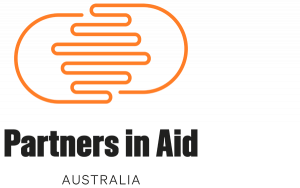Sinangpad Healthy Village Project – the Philippines
Philippines – Sinangpad Healthy Village Project
Partners in Aid supports the Sinangpad Association, Inc., a local NGO in Kalinga Province, northern Philippines, to help remote mountain villages improve health and sanitation through practical, community-led action.
The Sinangpad Healthy Village Project began after an AusAID health program ended, when local health workers and government staff formed Sinangpad to continue that work at the village level. Since 2007, Partners in Aid has funded their efforts to create cleaner, healthier communities in partnership with the Provincial Health Office and local governments.
Each participating village takes part in intensive Community Health Development training, where at least one representative from most households attends. Residents identify the main health risks in their area – such as open defecation, poor drainage, waste disposal, or roaming livestock – and plan simple, low-cost solutions they can build themselves. Sinangpad helps provide small grants for materials like cement or pipes, while communities supply the labour.
Current project activities focus on:
-
Expanding work to nine new villages, reaching nearly 6,500 people
-
Supporting two municipalities to achieve zero open defecation status
-
Introducing soap-making groups led mainly by women to promote hygiene and generate small household income
Follow-up mentoring and monitoring ensure that villages sustain improvements long after formal support ends. The project has now reached over 60 villages, demonstrating how lasting change can come from local leadership, low-cost innovation, and shared community pride.
Reporting

